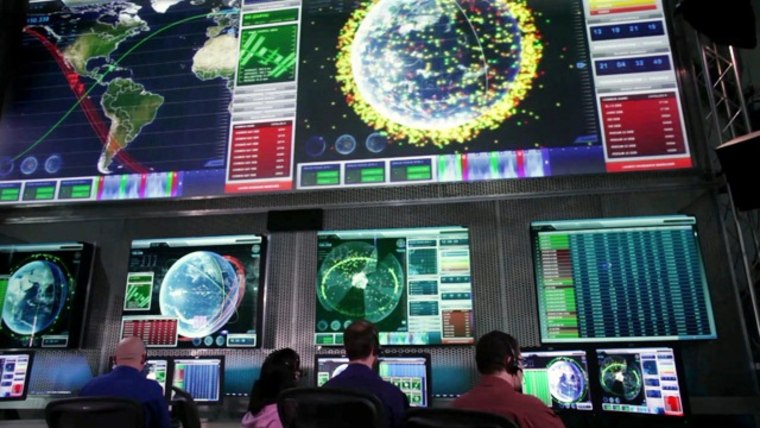The space-junk alerts that have been sounded on the International Space Station over the past couple of weeks highlight the need for the “Space Fence,” a next-generation system for tracking orbital debris that’s due to begin operation in 2015.
One of the alerts, on June 28, came so late that the station didn't have time to get out of the way. The six astronauts living aboard the orbital outpost had to take shelter in Russian Soyuz lifeboats while debris of unknown origin zoomed past at a distance of just 850 feet (260 meters).
The other alert came Sunday, just as the space shuttle Atlantis was beginning its last visit to the space station. Initially, mission managers worried that the station-shuttle complex would have to be moved out of the way of some Soviet-era satellite debris, but today they said the junk would pass by harmlessly at a distance of 11 miles (18 kilometers).
The first case in particular demonstrates why debris-trackers need to know more about what's out there, said Doug Burgess, manager for space situational awareness programs at Raytheon.
"They only had 15 hours to make a decision about whether to maneuver or not, and clearly human life was at stake," Burgess told me today. "If the capability that Space Fence brings to bear were available, they would have had a much longer lead time."
Today, orbital-debris trackers at NASA and the U.S. Strategic Command can keep track of only the tip of the iceberg: About 20,000 pieces of space junk have been cataloged, but experts estimate that somewhere between 100,000 and 500,000 objects larger than a centimeter (half an inch) are in Earth orbit. At orbital speeds of up to 17,500 mph, even an inch-wide piece of debris could destroy a satellite or damage the space station if it struck in the wrong place.
"This issue has always been on the minds of people who are trying to use space for all the things that it's used for today. ... We really are heavily reliant on space," John Morse, director of Lockheed Martin's Space Fence Program, told Discovery News.
More satellites in orbit tend to breed more space junk, as illustrated by the 2009 collision of a defunct Russian weather satellite and an Iridium telecom satellite, which left thousands of additional pieces of debris in orbit. "The situation is only going to get worse in time," Burgess said.
That's where the $3.5 billion Space Fence comes in. The existing radar tracking system, known as the Air Force Space Surveillance System, uses VHF and UHF frequency bands to track orbital debris, but those wavelengths are too wide to catch the small stuff. The new system will be far more sensitive because it'll operate in finer-resolution S-band wavelengths.
"It's an order-of-magnitude improvement," Burgess said.
But that's just the start: The next-generation Space Fence will also rely on high-performance computing to identify and keep track of orbital paths for what's likely to be hundreds of thousands of bits of orbiting junk. That should provide better "predict-ahead ability," Burgess said. Right now, NASA's rules call for the space station's crew to take evasive action — or prepare to abandon ship — if a piece of debris is projected to fly within an imaginary "pizza box" that's about 15 miles (25 kilometers) on each side and a half-mile (0.75 kilometers) above and below the station. The Space Fence would reduce the margin of error.
"Things like the pizza box get smaller, your uncertainty gets smaller, your ability to predict orbital tracks in advance becomes greater," Burgess said.
Raytheon and Lockheed Martin are in competition for the Space Fence contract, and in February, the U.S. Air Force provided each company with a $107 milllion, 18-month design contract. The designs are to get a preliminary review next February, with the contract awarded a year from now. The first of three planned globe-girdling radar installations is to be in operation in 2015, and the Space Fence should be fully operational in 2020. The favored sites for the installations are in Australia, the Marshall Islands and Ascension Island.
$3.5 billion may sound like a lot to pay for an invisible fence. But when you consider that the space station alone is a $100 billion-plus investment that needs to last until at least 2020 ... well, it just seems to me that they can't build that fence fast enough.
More about the space junk threat:
- Japan to go fishing ... for space debris
- Laser eyed to remove space junk from orbit
- NASA says it's stretched too thin to fight debris
- Europe creating a space-debris tracker of its own
Connect with the Cosmic Log community by "liking" the log's Facebook page or following @b0yle on Twitter. You can also check out "The Case for Pluto," Alan's book about the controversial dwarf planet and the search for new worlds.
